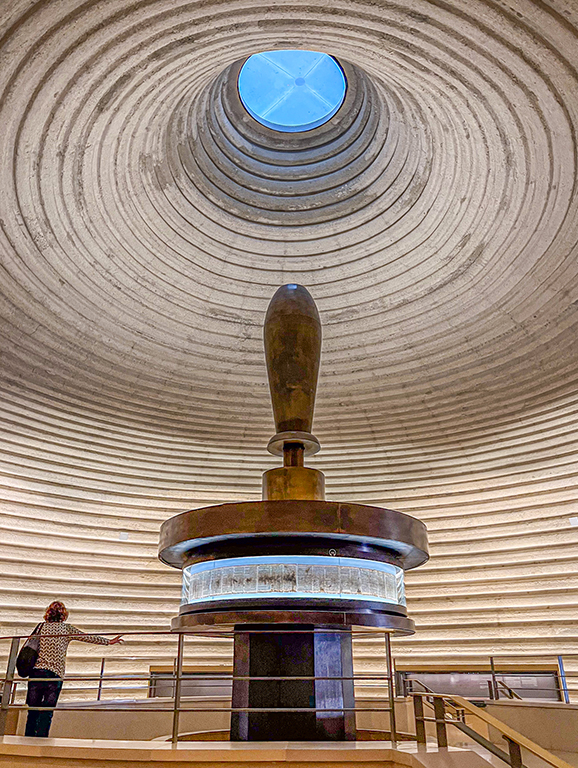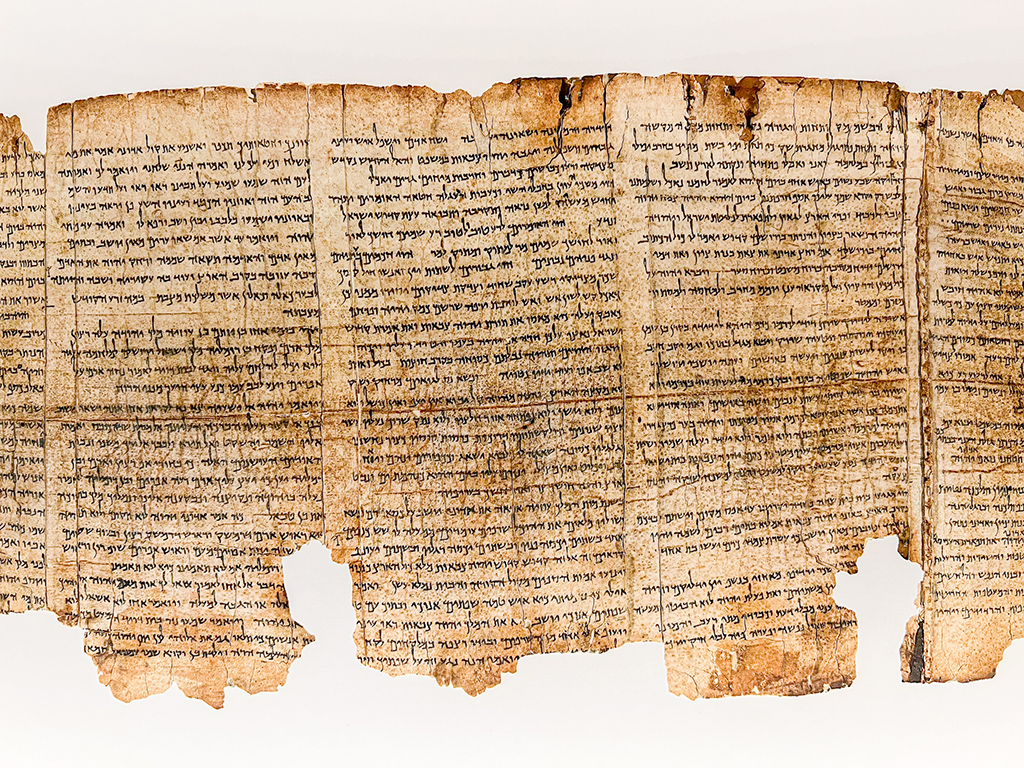Dr. Isaac Vaisman, APSA, PPSA

June 2024 - Shrine of the Book Complex

Original

Original 2
About the Image(s)
The Shrine of the Book was built as a repository for the first seven scrolls discovered at Qumran in 1947. The unique white dome resembles the lids of the jars in which the first scrolls were found. Is considered an international landmark of modern architecture. Its location next to official institutions of the State of Israel—the Knesset (Israeli Parliament), key government offices, and the Jewish National and University Library, is appropriate considering the degree of national importance that has been accorded the ancient texts and the building that preserves them. (Main image. Original 1 shows a view inside the structure)
The Dead Sea Scrolls are ancient manus that were discovered between 1947 and 1956 in eleven caves near Khirbet Qumran, on the northwestern shores of the Dead Sea. (original 2)
They are approximately two thousand years old, dating from the third century BCE to the first century CE. Most of the scrolls were written in Hebrew, with a smaller number in Aramaic or Greek. Most of them were written on parchment, except for a few written-on papyrus. Most of the scrolls survived as fragments, only a handful were found intact. Nevertheless, scholars have managed to reconstruct from these fragments approximately 950 different manus of various lengths. The manus fall into three major categories: biblical, apocryphal, and sectarian. The biblical manus comprise some two hundred copies of books of the Hebrew Bible, representing the earliest evidence for the biblical text in the world. The Hebrew Bible is the cornerstone of the Jewish people, and this fundamental text has left its imprint on Christianity and Islam